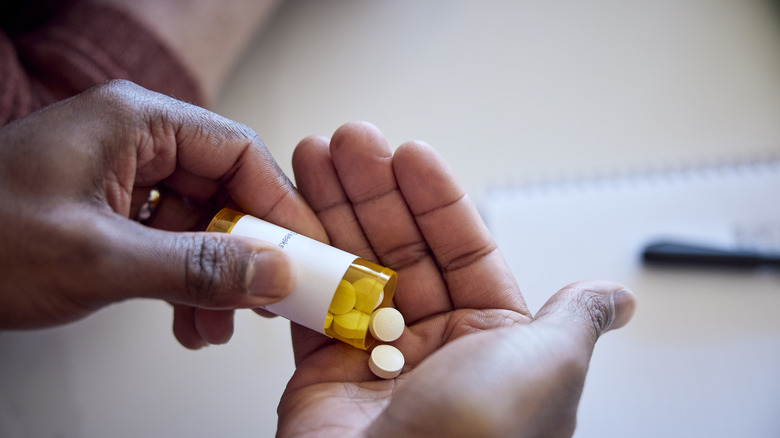How Much Money The Average American Spends On Healthcare
Americans spent $4.9 trillion on healthcare in 2023, which worked out to $14,570 per person. The Centers for Medicare & Medicaid Services (CMS) reported that that total was 7.5% higher than in 2022, and made up 17.6% of the country's gross domestic product (GDP). In simple terms, one out of every six dollars spent in the U.S. in 2023 went to medical care, prescriptions, or insurance, even as essential care grows more out of reach for older generations.
The numbers feel even more significant when compared with previous years. Much like how retirement was better in the 1970s, healthcare was similarly better for the average consumer. The CMS National Health Expenditure notes that, in 1970, the average person spent about $353 a year on health care. Adjusted for inflation, today's yearly cost is more than forty times higher, on top of things like ever-increasing grocery bills. CMS data shows that the average American spent more than $1,000 per person in 1980, $5,000 in 2002, and $10,000 in 2016. This increase is due to a mix of rising medical prices, more people having insurance, and an aging population that ultimately needs more care.
Where does all the money go?
Private health insurance covered the biggest share of America's medical bills in 2023. The Centers for Medicare & Medicaid Services reported that private plans paid $1.46 trillion, or 30 cents of every health care dollar. Medicare covered $1.03 trillion, making up 21% of the total, with Medicaid paying $871.7 billion, or 18%. Americans also paid $505.7 billion out of pocket, or about 10% of all spending. The remaining 12% of the total went to local health programs, government clinics, and the cost of running insurance companies.
Private health insurance costs went up by 11.5%, per the 2023 National Health Expenditures highlights. This was the biggest increase of all health care payers. Medicare costs rose by 8.1%, Medicaid by 7.9%, and the amount people that paid out of pocket grew by 7.2%. According to CMS, this increase in private insurance costs was driven by a combination of more people having insurance, higher overall monthly payments, and more use of care services.
The number of people with private insurance grew by 1.6%, or 3.3 million people, raising the insured rate to 92.5% in 2023. Meanwhile, hospital costs increased 10.4% as more patients were admitted, while spending on doctors and clinics rose 7.4%. The average monthly payment for employer health coverage increased 7%, and the typical amount that people would need to pay before their insurance kicked in to cover costs was $1,735 per KFF's Employer Health Benefits Survey for 2023. Consumer monthly payments rose 8.9%, which ultimately meant less take-home pay for Americans.
Average spend on health care per state
The most recent official state-by-state health spending figures from CMS are from 2020. This data shows New York at the top with $14,007 per person, and Utah at the bottom with $7,522– meaning people in New York spent about 86% more than those in Utah. As a baseline, the national figure that year was $10,191. By region, people in New England spent $12,728 per person while people in the Mideast spent $12,577. People in the Rocky Mountain region spent $8,497, and people in the Southwest spent $8,587, the lowest in the country.
Who pays also varies by state per 1991 to 2000 State Health Expenditure Accounts data. In 2020, the state with the most spend per person on Medicare was in Florida at $13,652, and the least was in Vermont at $8,726. Medicaid spending per person enrolled was highest in North Dakota at $12,314, and lowest in Georgia at $4,704. For private health insurance, spending per person enrolled was again highest in New York at $6,264 and lowest in Utah at $3,287 . Plus, it's worth mentioning that from 2015 to 2020, per-person health spending in New York grew 6.3% each year, compared with just 2.9% in Wisconsin.


